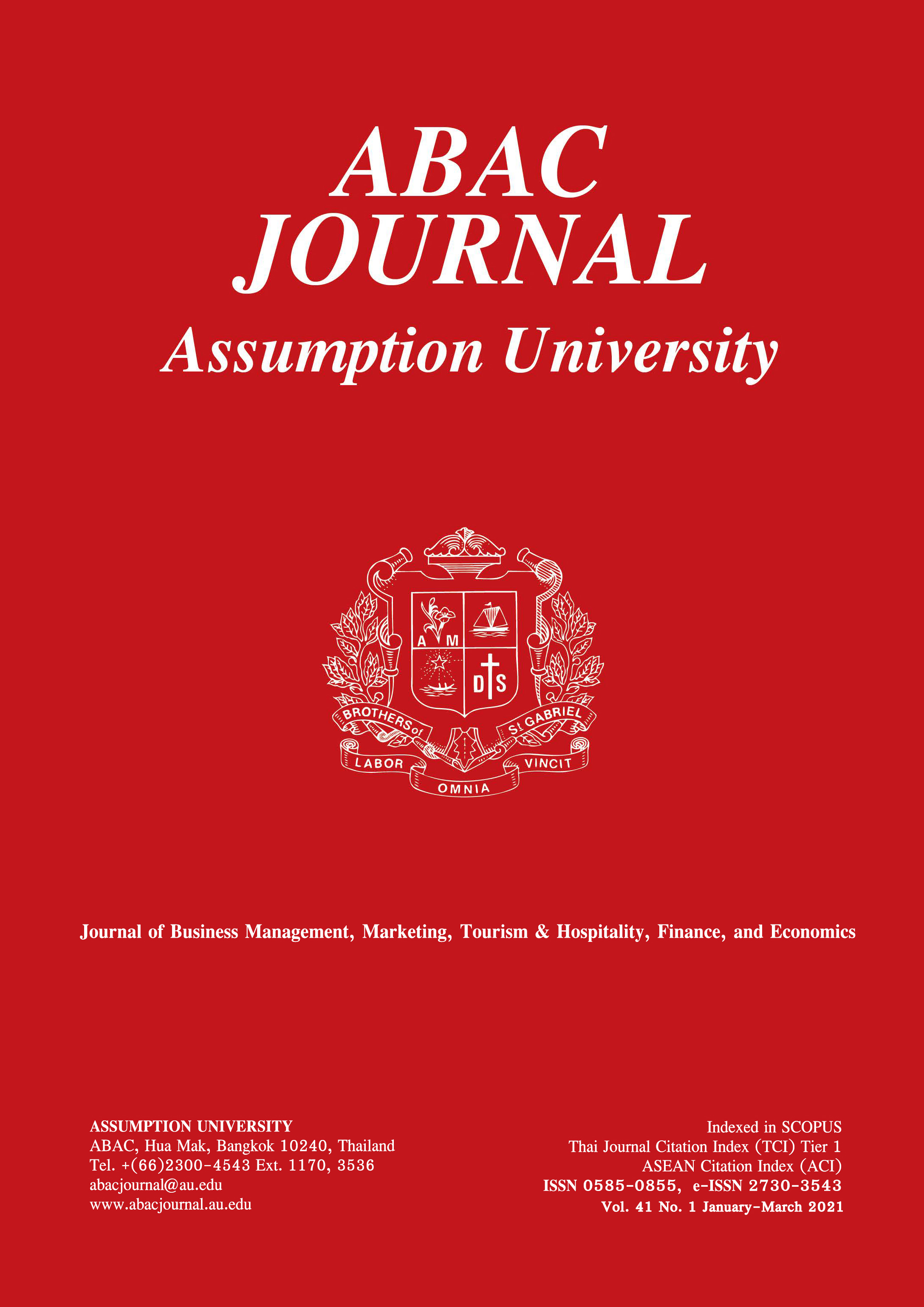Acceptance of Mobile App “Racadi” Among Small Retailers: An Action Research
Keywords:
mobile app, technology acceptance, small retailers, action researchAbstract
Small retailers often find it challenging to cope with the changes and competition in the business. One of the primary problems that small retailers are now facing is their clinging to the old ways of doing business. In this study, we introduced a sales management mobile application called “Racadi” (which means “good-priced” in the Thai language) to help address this inherent concern. In particular, we employed an action research design to study why some small retailers choose to accept or reject this mobile application. Based on several technology acceptance models, our research was divided into three phases. Phase 1 involved learning the needs of small retailers and the design of Racadi, whereas Phase 2 involved identifying retailers’ difficulties in the use of Racadi. In Phase 3, we sought to understand why some retailers maintain their use of Racadi. Data are primarily collected through in-depth interviews with 50 retailers over nine months. The findings show that the three prominent theories (TAM, UTAUT 2, and DIT) are not sufficient to explain mobile application adoption among small retailers as not all critical factors involved are identified. New factors revealed by this study are 1) Entrepreneurial Spirit, 2) Ability to Use, and 3) Perceived Risk. Several important theoretical and practical implications have emerged from this present research.
References
REFERENCES
Arbuthnot, J. J., Slama, M., & Sisler, G. (1993). Selection criteria and information sources in the purchase decisions of apparel buyers of small retailing firms. Journal of Small Business Management, 31(2), 12.
Alford, P., & Page, S. J. (2015). Marketing technology for adoption by small business. The Service Industries Journal, 35, 655-669.
Choudrie, J., & Dwivedi, Y. K. (2005). Investigating the research approaches for examining technology adoption issues. Journal of Research Practice, 1(1), 1.
Coghlan, D. (2019). Doing action research in your own organization. SAGE Publications Limited.
Davis, F., Bagozzi, R. P., & Warshaw, P. R. (1989). Davis, F. D.; Bagozzi, R. P.; Warshaw, P. R. (1989). User acceptance of computer technology: A comparison of two theoretical models. Management Science, 35, 982–1003.
Grewal, D., Roggeveen, A. L., & Nordfalt, J. (2017). The future of retailing. Journal of
Retailing, 93, 1-6.
Hussein, Z. (2017). Leading to intention: The role of attitude in relation to Technology
Acceptance Model in e-Learning. Procedia Computer Science, 105, 159-164Islam, R., Islam, R., & Mazumder, T. (2010). Mobile application and its global impact. International Journal of Engineering & Technology (IJEST), 10(6), 72-78.
Islam, R., Islam, R., & Mazumder, T. (2010). Mobile application and its global impact. International Journal of Engineering & Technology (IJEST), 10(6), 72-78.
Lemay, D. J., Morin, M. M., Bazelais, P., & Doleck, T. (2018). Modeling students’ perceptions of simulation-based learning using the Technology Acceptance Model. Clinical Simulation in Nursing, 20, 28-37.
Lewin, K. (1946). Action research and minority problems. Journal of Social Issues, 34-47.
Mugo, D. G., Njagi, K., Chemwei, B., & Motanya, J. O. (2017). The Technology Acceptance Model (TAM) and its application to the utilization of mobile learning technologies. British Journal of Mathematics & Computer Science, 20(4), 1-8.
Nikou, S. A., & Economides, A. A. (2017). Mobile-based assessment: Integrating acceptance
and motivational factors into a combined model of self-determination theory and technology acceptance. Computers in Human Behavior, 68, 83-95.
Pierce, S. (2008). “Spirit of the Entrepreneur”. Retrieved October 15, 2019, from https://www.entrepreneur.com/article/190986
Runyan, R. C., & Droge, C. (2008). A categorization of small retailer research streams: what does it portend for future research?. Journal of Retailing, 84(1), 77-94.
Rogers, E. (2003). The diffusion of innovations (5th ed.). New York: The Free Press.
Rouse, M. (2013). Mobile app. Retrieved 2019, October 6, from https://whatis.techtarget.com/definition/mobile-app
Smartbear. (2014). Nearly 50% of consumers will delete a mobile app if they encounter a single bug, reveals survey by smartBear. Retrieved 2019, March 12, from https://smartbear.com/news/news-releases/the-state-of-mobile-testing-2014.aspx/
Statista. (2019). Number of apps available in leading app stores as of 2nd quarter. Retrieved 2019, October 6, from https://www.statista.com/statistics/276623/number-of-apps-available-in-leading-app-stores/
Turner, S., & Endres, A. (2017). Strategies for enhancing small business owners’ success rates. International Journal of Applied Management and Technology, 16(1), 3.
Venkatesh, V., Thong, J. Y. L., & Xu, X. (2012). Consumer acceptance and use of information technology: Extending the unified theory of acceptance and use of technology MIS Quarterly, 36(1), 157-178.
Verma, S., Bhattacharyya, S. S., & Kumar, S. (2018). An extension of the Technology
Acceptance Model in the big data analytics system implementation environment. Information Processing & Management, 54(5), 791-806.






